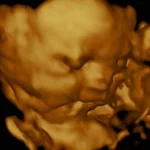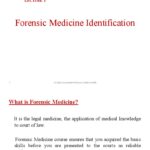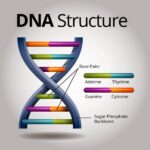The query of whether a blood test can definitively establish siblinghood is complex, delving into the intricacies of genetics and serology. While a standard blood type test, which categorizes blood into groups like A, B, AB, and O based on the presence or absence of specific antigens, provides some clues, it is rarely sufficient for conclusive sibling verification. More advanced genetic analyses offer a far more precise methodology.
Blood Type Inheritance: A Foundational Understanding
Blood types are inherited traits governed by specific genes. The ABO blood group system is determined by three alleles: A, B, and O. Each individual inherits two of these alleles, one from each parent. The A and B alleles are co-dominant, meaning that if both are present, both traits are expressed (resulting in blood type AB). The O allele is recessive, meaning that it only manifests if an individual inherits two copies of the O allele (resulting in blood type O).
Understanding the inheritance patterns of blood types is crucial. For instance, if one parent has blood type A and the other has blood type B, their offspring could theoretically have blood types A, B, AB, or O. If two individuals claim to be siblings and their blood types are incompatible with the possible combinations derived from their purported parents’ blood types, it raises a flag, indicating that they are unlikely to be full siblings. However, compatibility in blood types doesn’t guarantee a sibling relationship; it merely establishes a possibility.
Limitations of Blood Typing in Sibling Verification
The inherent limitation of using blood types for sibling verification stems from the limited number of possible blood types and the commonality of certain blood types within populations. A large segment of the population may share the same blood type. Therefore, two unrelated individuals could easily share the same blood type as two siblings. This makes blood typing an unreliable sole indicator of siblinghood. The probability of shared blood types increases if there are parental consanguinity.
Moreover, blood typing only considers the ABO system and the Rh factor (positive or negative), overlooking the myriad other blood group systems (e.g., Duffy, Kidd, Kell) that exist. Analyzing these additional blood group systems could increase the discriminatory power, but even then, it would fall far short of the accuracy offered by modern DNA testing.
The Power of DNA Testing: A Superior Approach
DNA testing, specifically genetic marker analysis, offers a vastly superior method for determining sibling relationships. This approach involves analyzing specific regions of DNA that exhibit high variability between individuals. These regions, often short tandem repeats (STRs), are highly polymorphic, meaning they exist in many different forms (alleles) within the population. The pattern of alleles inherited by each individual is unique, akin to a genetic fingerprint.
There are several types of DNA tests used to establish siblinghood. A full sibling test compares the DNA profiles of two individuals to determine the amount of shared DNA. Full siblings will share approximately 50% of their DNA, inheriting half from each parent. A half-sibling test is used when individuals share only one biological parent. Half-siblings will share approximately 25% of their DNA. The analytical nuance between these tests arises from the statistical probabilities associated with DNA sharing. Unrelated people may still share some of their DNA. Therefore, the degree of shared DNA must exceed what would be expected by chance.
In cases where the purported parents are available for testing, a more definitive conclusion can be reached. By comparing the DNA profiles of the individuals in question to the DNA profiles of their purported parents, it is possible to trace the inheritance patterns and determine whether the individuals are indeed siblings. This is known as a kinship analysis.
Considerations for Half-Siblings
Establishing half-sibling relationships requires a different analytical approach compared to full-sibling verification. Because half-siblings only share one parent, the amount of shared DNA is significantly lower, making the analysis more challenging. The statistical probability of coincidental DNA sharing increases, demanding a higher level of scrutiny and a larger number of genetic markers to be analyzed.
In half-sibling testing, the availability of the shared parent’s DNA is particularly advantageous. Comparing the DNA profiles of the half-siblings to the shared parent’s DNA allows for a more direct assessment of the inherited genetic material. Without the shared parent’s DNA, the analysis relies on statistical calculations and the comparison of population databases, which can introduce a degree of uncertainty.
Legal and Ethical Implications
The results of sibling DNA testing can have significant legal and ethical implications. These tests are frequently used in inheritance disputes, immigration cases, and other legal proceedings where establishing family relationships is critical. It is imperative that such testing is conducted by accredited laboratories following strict chain-of-custody procedures to ensure the accuracy and admissibility of the results.
Ethically, it’s essential to consider the potential impact of the test results on the individuals involved and their families. Discovering that one is not a biological sibling can be emotionally distressing and can alter familial dynamics. Confidentiality and informed consent are paramount when conducting sibling DNA testing.
Conclusion
While blood typing can provide preliminary indications, it lacks the precision to definitively determine siblinghood. DNA testing, with its ability to analyze multiple highly variable genetic markers, offers a far more accurate and reliable method for establishing sibling relationships, whether full or half. The interpretation of DNA test results requires careful consideration of statistical probabilities, inheritance patterns, and the potential legal and ethical ramifications.










Leave a Comment